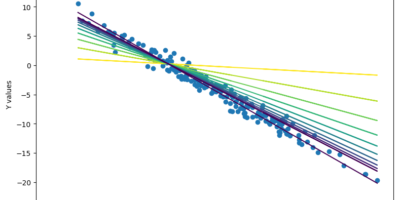Towards the end of Fall 2014, a series of articles on various pioneers of science and engineering appeared in the pages of Iron Warrior, written by Cameron Soltys, Jessica Keung, and yours truly. These were generally well received, and I am pleased to report that this will become a regular column in this newspaper. In each edition this term, there will be an article about someone whose work laid the foundations for what we study and practice today. Even Sir Isaac Newton recognized that he had been “standing on the shoulders of giants”. (Just in case the point wasn’t clear enough, Newton didn’t come up with that saying; he actually got it from the medieval philosopher Bernard de Chartres).
So far, you may have noticed that all of the articles in this series have been about European men. It is, of course, undeniable that dudes from Europe have done a lot to advance our understanding of the world over the past centuries. As well, in recent years a number of deplorable acts of violence have caused some North Americans and Europeans to view the Islamic states of the Middle East as a cesspool of ignorance from which no good ever comes. It’s important that we don’t go too far the other way, proudly setting up Western civilization as some inherent source of good and calling out all other peoples for not doing their share.
So this week, I will introduce two Persians: the mathematician Muhammad bin Musa al-Khwarizmi (780-850) and the astronomer Muhammad Abu al-Wafa al-Buzjani (940-997). As I write this, I’m reminded of the scene from Superbad where Fogell realizes McLovin might not have been the best name to use on his fake ID, when “Muhammad is the most commonly used name on earth”.
A thousand years before trains and cars, it was very hard for people in different parts of the world to communicate with each other. But the 9th century was an exciting time for Middle Eastern scholars; the books of Aryabhata and Brahmagupta – the guys who had come up with the sine and cosine functions and the previously unheard-of number 0 – as well as Euclid and Claudius Ptolemy, who had recorded many geometry theorems, had just been translated into Arabic. It was a time of East meeting West. With the greatest classics of Greece and India now available, the stage was set.
Al-Khwarizmi
Al-Khwarizmi wrote two books which would become classics of the Middle Ages: The Art of Adding and Subtracting with Indian Numbers, and the Compendium of Calculation by Restoring and Balancing.
In Indian Numbers, Al-Khwarizmi’s recognized that the Indians were on to something with the whole zero thing. Up until that point, most people had used letters of the alphabet to represent numbers, because otherwise no one would be able to tell the difference between 10 and 100. But using the number zero, all we needed was ten symbols, and we could write any number. Arithmetic just got a whole lot easier.
The Compendium of Calculation introduced several rules of algebra which have become second nature to us. Al-Khwarizmi proposed that there were two basic rules: restoration (in Arabic, al-jabr), which means to turn a negative quantity on one side of an equation into a positive on the other side, such as reducing 5 – 6x = 4x to 5 = 10x, and balancing (al-muqabala), which means to cancel common terms on both sides of an equation, so that a + 6x = 6x becomes a = 0. This work was so influential that this entire field of mathematics eventually became known as al-jabr (algebra). By applying various versions of these two rules, Al-Khwarizmi developed the method of completing the square, and therefore was the first to come up with the general formula to solve quadratic equations that we all know and love today.
Abu Al-Wafa
About 150 years later, Abu al-Wafa would make major contributions to what we now call trigonometry. He gave the sine and cosine a new definition based on a unit circle, which we still use today. Next, by using addition and subtraction formulas (e.g. sin (a + b) = sin a cos b + cos a sin b) on sines of “nice” angles (e.g. sin 30° = 0.5) and linear interpolation, he created a table that could be used to calculate the sine or cosine of any angle – his value of sin 1° was accurate to within 10-7 of the true value. He also noticed that the ratio between the sine and the cosine was often very useful in its own right, and so he decided to make this a separate function of its own and write tables for it. He called it the shadow (which I shall explain below), but nowadays we call it the tangent. Abu al-Wafa would later count the reciprocals cotangent, secant, and cosecant as functions in their own right, and he would write a book describing all six trigonometric functions. He would also extend his functions to spherical trigonometry. Quite the modest guy, and imitating Ptolemy who had written a text called “The Great Treatise”, he called his book “The Greatest Treatise” (Al-Kitab Al-Majisti).
As a Sunni Muslim, Abu al-Wafa applied his new functions to solve problems involving two of the five pillars of that faith. The tangent (shadow) function could be used on a sunny day to calculate the sun’s altitude based on the length of shadows, which had implications for the daily prayer times. Also, the sun’s altitude could itself be used to determine latitude, and times when eclipses happened could be used to determine longitude. Once the coordinates of a city were known, then finding the direction to Mecca is a simple spherical trigonometry problem. Another application of trigonometry was to forecast the positions of the Sun and Moon in the sky (their movement can be described with sinusoidals), and thus be able to determine the exact times of sunrise, sunset, and new moon – which is useful for observing the Ramadan fast.
Legacy
People like the Arab-educated Pope Sylvester II (946-1003), Leonardo Fibonacci (1170-1250), and Rabbi Levi ben Gershon (1288-1344) would bring knowledge of the decimal system, algebra, and trigonometry to Europe. Al-Khwarizmi’s books would later become standard textbooks in medieval Europe. In fact, his name is the origin of the word “algorithm” for “set of operations to solve a problem”. By the 17th century, all of these would become important building blocks of the emerging scientific revolution, which employed mathematics to describe and predict the behaviour of the world around us.




Leave a Reply